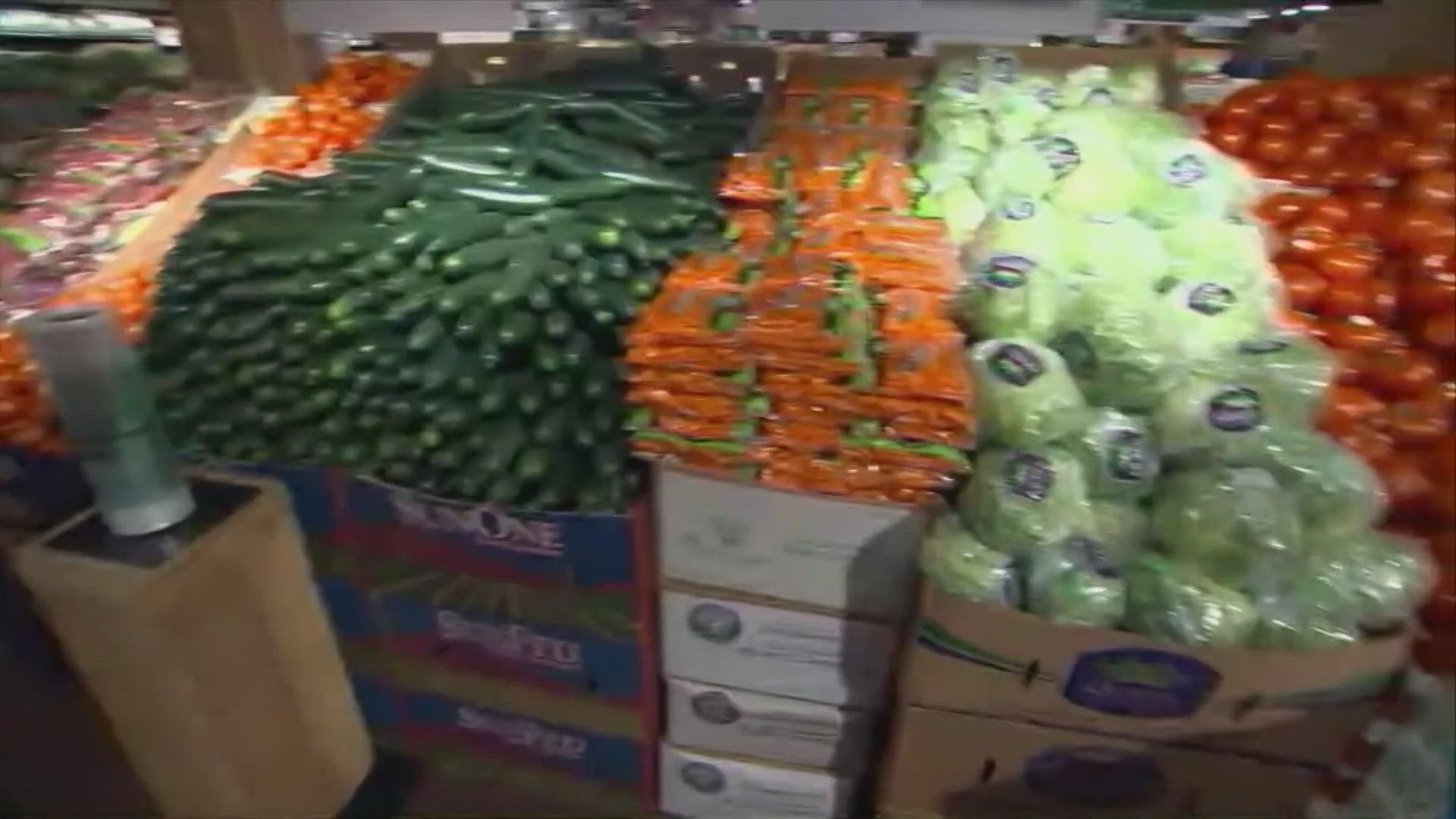SAN ANTONIO — San Antonio Food Bank CEO Eric Cooper says he expects demand will skyrocket when Supplemental Nutrition Assistance Program (SNAP) benefits shrink after February.
Americans have enjoyed boosted payouts since April 2020, when Congress granted all eligible SNAP recipients the maximum monthly benefit. For nearly three years, a family of three that would normally be eligible for $500 in assistance each month, for example, has collected $740 - the maximum payout for a household of that size.
In January 2023, Texas distributed $317.7 million more to SNAP recipients because of the expanded policy. Nearly 3.7 million Texans require food stamps.
But February will be the last month Americans collect the boosted payout.
"When that hits, what will families do?" Cooper asked. "We worry that we'll se a tidal wave of need coming our way."
Cooper said the San Antonio food bank currently serves about 105,000 people each week, near pandemic levels because of inflation and high bills. Prior to the pandemic, the food bank served just 60,000 each week.
Cooper notes that boosted SNAP benefits have improved the population's health. It's been easier, he says, for eligible consumers to buy good protein or fresh produce.
"When that program shrinks, it shrinks the nutrition families will receive," he said, noting that Americans often turn to dollar menus to cope with tighter budgets.
The reduced SNAP benefits will also impact producers. Grocers and suppliers, such as farmers and ranchers, stand to earn less money when the boosted payout leaves circulation.
"They're leaving the grocery store with less food in the cart than ever before," Cooper said, citing inflation's current impact on shopping habits.
"These kinds of cuts - it's not anything we can make up," he added.

